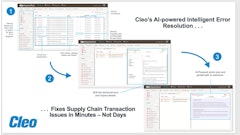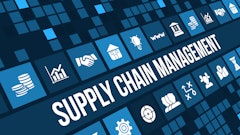
For companies with more than 5,000 employees, supply chain visibility (i.e. the ability to track the traceability of products and services, including order status, physical product shipments, logistics activities and transport), is the top priority for more than half. While it is a prime concern, it is time to face an uncomfortable truth: visibility is not enough. The truth is, visibility has become the supply chain's favorite buzzword.
Most companies are choking on data while desperately gasping for action. The ability to passively see what's happening across your supply chain is about as useful as installing a high-definition security camera in a burning building. But all that crystal-clear visibility won't extinguish a single flame.
Consider the seasonal flu vaccine supply chain, where manufacturers must coordinate the production and distribution of vaccines to over 172 million Americans annually. Traditional visibility tools might show you real-time location data for vaccine shipments, temperature logs, and inventory levels. But what good is that information if you can't automatically trigger contingency plans when a cold chain breach occurs or dynamically reroute shipments when demand patterns suddenly shift?
The answer isn't visibility – it's actionability. Organizations are hemorrhaging millions on fancy analytics that do nothing but paint pretty pictures of their problems, while their teams run around like firefighters with empty hoses, desperately seeking solutions. It's time to call this out for what it is: a costly exercise in digital window dressing.
The Real Problem: Failing to Separate the Signal from the Noise
Let's rip off the band-aid: Modern supply chains aren't suffering from poor visibility – they're being suffocated by it. From IoT sensors and RFID tags to ERP systems and supplier portals, supply chain professionals face a tidal wave of data and dashboards. A global organization today might track anywhere from 2,000 to 400,000 SKUs and millions of orders and shipments, each generating data as they progress across the supply chain ecosystem.
Here's the maddening reality: when everything screams for attention, you go deaf to what matters. Picture this absurdity: your million-dollar visibility system treats a delayed paperclip shipment with the same red-alert urgency as compromised medical supplies that could cost lives. Still feeling good about all that visibility? Traditional visibility tools will dutifully report both issues with equal urgency, leaving overwhelmed teams to manually sort through the noise and determine priorities.
Beyond Visibility: The Action Imperative
The reality is that supply chain excellence lies not in seeing more but in accelerating decision-making – automatically, intelligently, and at scale. This requires a fundamental shift from passive observation to intelligent orchestration. This can be accomplished through:
- Noise Cancellation: Automated filtering and prioritization of signals based on business impact and urgency;
- Cross-functional Correlation: Understanding how disruptions in one area affect the entire supply chain;
- Predictive Intelligence: Using Artificial Intelligence (AI) and Machine Learning (ML) to anticipate issues before they become crises; and
- Automated Response: Triggering immediate actions for routine disruptions while escalating complex decisions to human experts.
This isn't just about efficiency – it's about survival. In an environment where supply chains face constant and inevitable disruption, the ability to move from insight to action at speed becomes a strategic competitive advantage.
The Path Forward: From Observation to Orchestration
The good news is that the technology exists today to make this transformation possible. Advanced AI and ML systems can process millions of data points in real-time, identifying patterns and relationships that would be impossible for human operators to spot. More importantly, they can recommend or automatically initiate appropriate responses based on specific supply chain context and the probability of a range of potential business impacts.
Take the pharmaceutical supply chain organization as an example. Instead of simply tracking temperature variations in cold chain shipments, intelligent systems can:
● Automatically reroute temperature-sensitive products when environmental risks are detected;
● Trigger procurement of additional inventory based on predictive demand signals;
● Coordinate with logistics partners to expedite critical shipments; and
● Alert downstream customers and activate contingency plans as needed.
The results of this approach are transformative. It’s possible to reduce waste through automated intervention in potential spoilage situations, improve service levels through proactive risk management, enhanced resource utilization by focusing human expertise on strategic decisions, and increase resilience through automated response to routine disruptions.
The Bottom Line: Action Speaks Louder Than Visibility
The stakes couldn't be higher: Supply chain performance can make or break a company's success, customer satisfaction and even the lives of their customers. We can no longer afford to mistake visibility for capability. The real question isn't, "Can you see what's happening?" but rather “What preemptive action can (or will) be taken based on turning the insights from the data into decisions”.
It's time to stop celebrating systems that simply show you problems and start demanding solutions that solve them. The technology exists to move beyond the "lipstick on a pig" approach of basic visibility tools to truly intelligence driven dynamic supply chain orchestration. Those that make this leap will find themselves not just surviving but thriving in an increasingly complex supply chain environment.
![Pros To Know 2026 [color]](https://img.sdcexec.com/mindful/acbm/workspaces/default/uploads/2025/08/prostoknow-2026-color.mduFvhpgMk.png?auto=format%2Ccompress&bg=fff&fill-color=fff&fit=fill&h=100&q=70&w=100)

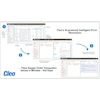

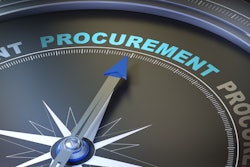
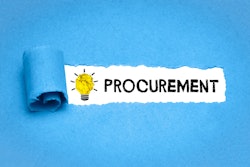


![Pros To Know 2026 [color]](https://img.sdcexec.com/mindful/acbm/workspaces/default/uploads/2025/08/prostoknow-2026-color.mduFvhpgMk.png?ar=16%3A9&auto=format%2Ccompress&bg=fff&fill-color=fff&fit=fill&h=135&q=70&w=240)

